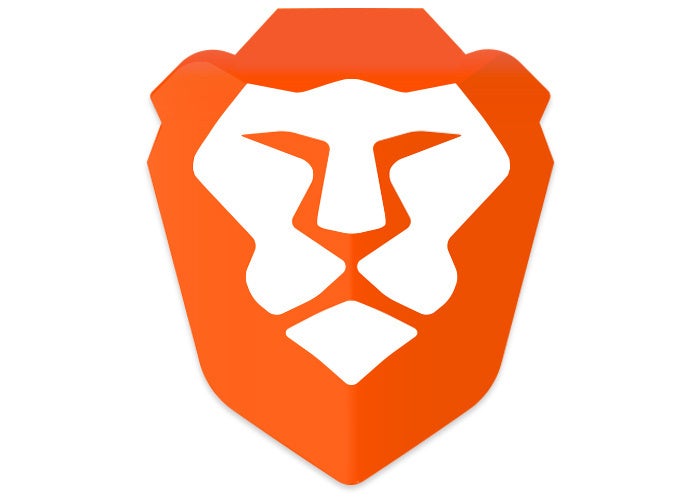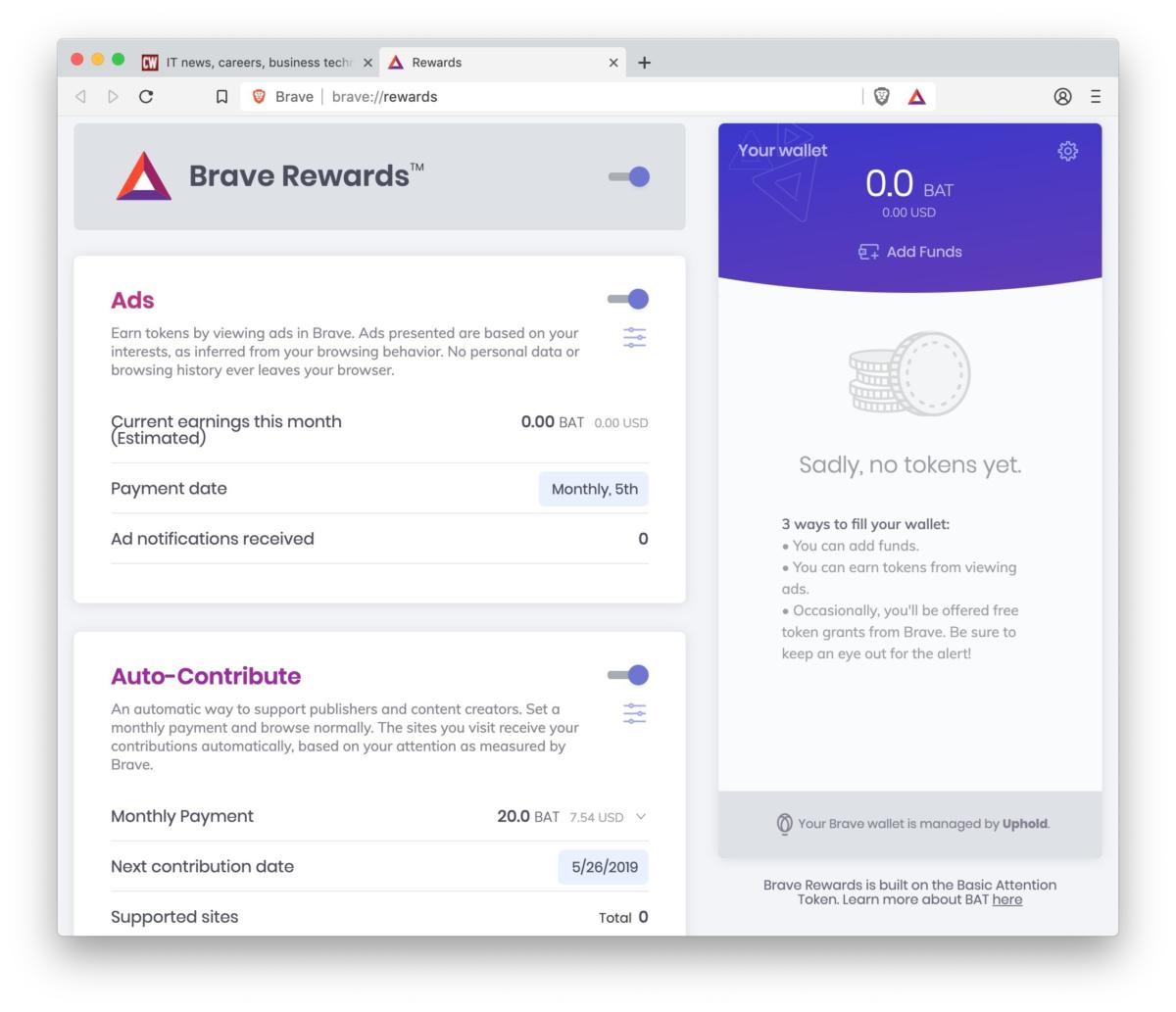Brave browser debuts working BATs-for-ads concept

Users who volunteer to see the ads will be given 70% of the revenue the ads generated, not in cash but in BATs, or Basic Attention Tokens, the crypto-backed currency that drives the Brave economy. Users cannot exchange BATs for physical currency, although Brave said it is working on not only that, but also on ways to redeem the BATs for perks and other rewards, such as vouchers and gift cards.
The latest version of Brave - 0.63.48 - is required to opt in to the ad-and-BATs scheme. The browser is based on Chromium, the Google-led open-source project that produces the core technologies used by Google's own Chrome, Opera Software's Opera and at some point, Microsoft's Edge.
No AdsBrave's premise is that users want a browser that doesn't show the current kind of online ads but instead strips every ad from every page - scrubs ad trackers while it's at it - ala, say, Chrome or Firefox armed with a comprehensive ad blocker.
But Brave needed a business model, a way to pay the staff who produced and maintain the browser. For that, Brave came up with the idea of replacing the erased ads with ads it sold. To internally monetize the model, Brave created BATs, which users earn for agreeing to view ads and other content. The tokens could be passed to publishers as support for their sites, or alternately the tokens could be exchanged for premium content or advanced features on a website.
Complicating matters, Brave has decided on two categories of its ads-as-replacement-for-other-ads: one, named "User Ads," the other labeled "Publisher-integrated Ads." It's the former that launched last week.
User Ads are unlike traditional website ads in that they're full-page displays that appear only after the user accepts an on-screen notification that one can be viewed. "When users click to engage with these notifications, they're presented with a full page ad in a new ad tab," Brave stated. It's because User Ads are so different that Brave can get away with saying, "Brave Ads do not replace current Web page ads. They are separate and supplemental," even though they replace current ads in that the latter no longer appear in Brave but the former certainly do.
Brave will hand over 70% of the revenue from User Ads to, well, the users - so the approximately 5.5 million users as of December will split that 70% - and keep the remaining 30%. Sites that, at least in Brave, receive no ad revenue because their ads have been blocked, get nothing except for any largess users dole out using BATs.
It's as if a TV maker came up with technology that erased ads from a program, say ESPN, when it showed on the screen; inserted its own house ads into the ESPN show; then credited owners of the TVs with IOUs for volunteering to watch those ads. The IOUs would be split between ESPN and other channels' programs the viewer tuned to and saw ads on. At some point, the TV manufacturer would exchange the IOUs for some of the cash generated by ad sales. The remainder, the TV maker would keep.
The concept might show viewers fewer ads - or none if they refuse to look at any - but that would be in large part because the TV maker would have to generate much less revenue to stay afloat than if it had also created the content by, for instance, building and programming its own ESPN.
By default, Brave will show two of these ads hourly, although users can change the setting from between one and five per hour. Out of the box, Brave distributes any accrued BATs automatically, "based on your attention as measured by Brave." Users can also "tip" specific sites or set up recurring monthly tips to favorite destinations.

Brave's BAT-and-ad pane lets users set contributions of the former and notifications per hour of the latter, among other things.
Currently, User Ads come from the two ad networks and three cryptocurrency-centric companies featured in the previews that started in January, as well as five new advertisers. Three of those are cryptocurrency-focused as well, while the remaining pair are the media company Vice and the meal kit firm Home Chef.
Second ad category still to comeYet to make an appearance are Publisher-integrated Ads, which Brave hasn't described in detail other than to assert that they will be "private ads within their [content provider's] website." Brave said that this ad category would launch later this year.
Publisher-integrated Ads will split revenue differently: 70% will go to what Brave calls verified publishers and content creators, 15% to users and 15% to Brave.
Brave hasn't said whether it will use both ad types concurrently or if it expects one to dominate such that the other is discarded.
Until users amass BATs, of course, none of this giving of BATs matters... unless the user decides to buy some BATs (now, that's not a phrase one often sees). For now, the only way to do that is through a transfer from a crypto currency wallet holding Bitcoin, Ethereum or Litecoin. Recognizing that most people don't deal in crypto currencies, Brave promised, "In the future, we will add the ability to directly fund your wallet with a credit card in the browser."
We provide free cash registers, pos equipment and chip readers. Go to credit-card-processing.com
Media Contact
Company Name: Merchant Resources
Contact Person: Gary DeRoos
Email:Send Email
Phone: 1-888-895-3129
City: Oceanside
State: CA
Country: United States
Website: http://www.credit-card-processing.com
